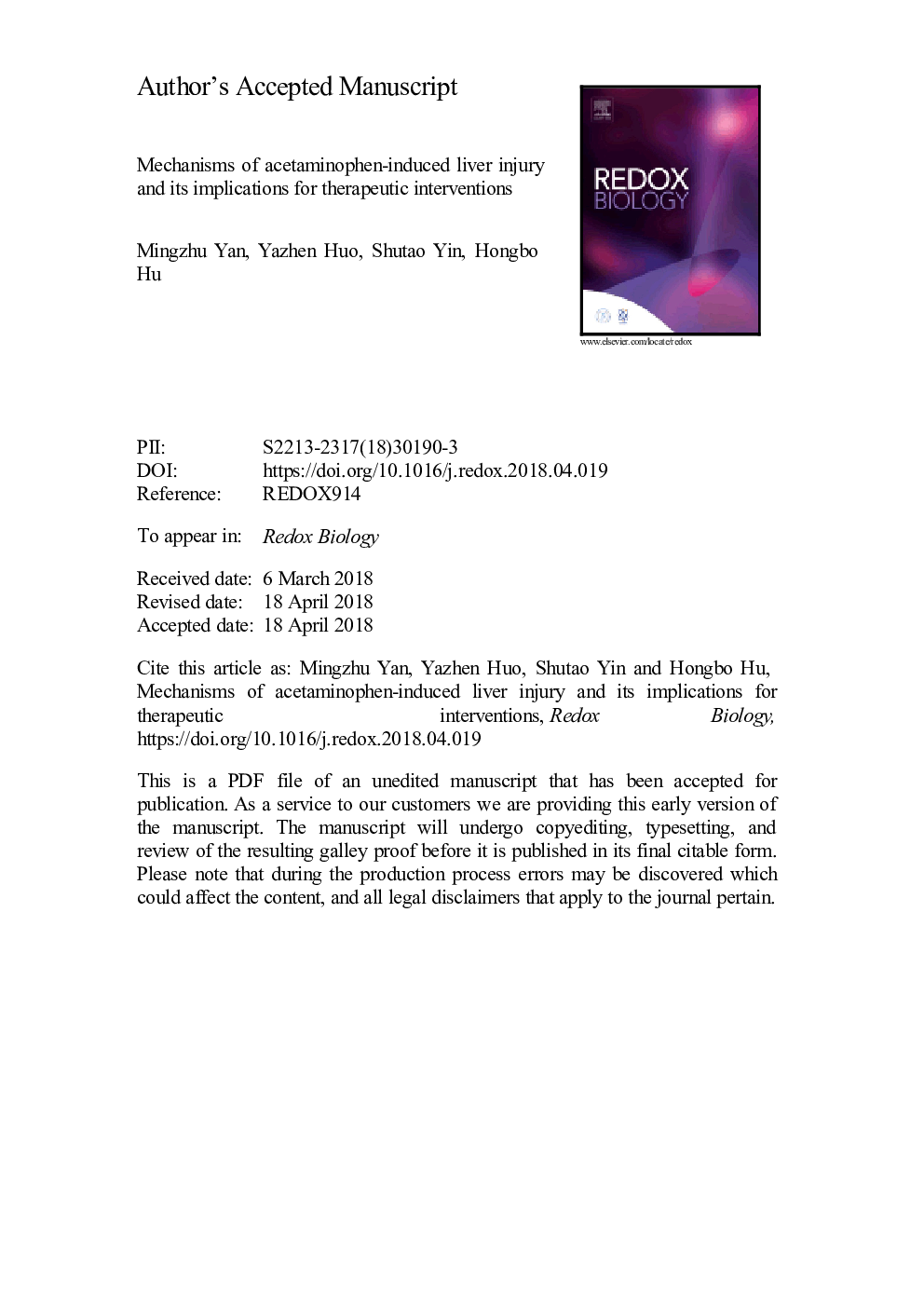| کد مقاله | کد نشریه | سال انتشار | مقاله انگلیسی | نسخه تمام متن |
|---|---|---|---|---|
| 8286376 | 1535833 | 2018 | 40 صفحه PDF | دانلود رایگان |
عنوان انگلیسی مقاله ISI
Mechanisms of acetaminophen-induced liver injury and its implications for therapeutic interventions
ترجمه فارسی عنوان
مکانیسم آسیب کبدی ناشی از استامینوفن و پیامدهای آن برای مداخلات درمانی
دانلود مقاله + سفارش ترجمه
دانلود مقاله ISI انگلیسی
رایگان برای ایرانیان
کلمات کلیدی
موضوعات مرتبط
علوم زیستی و بیوفناوری
بیوشیمی، ژنتیک و زیست شناسی مولکولی
سالمندی
چکیده انگلیسی
Acetaminophen (APAP) overdose is the leading cause of drug-induced acute liver failure in many developed countries. Mitochondrial oxidative stress is considered to be the predominant cellular event in APAP-induced liver injury. Accordingly, N-acetyl cysteine, a known scavenger of reactive oxygen species (ROS), is recommended as an effective clinical antidote against APAP-induced acute liver injury (AILI) when it is given at an early phase; however, the narrow therapeutic window limits its use. Hence, the development of novel therapeutic approaches that can offer broadly protective effects against AILI is clearly needed. To this end, it is necessary to better understand the mechanisms of APAP hepatotoxicity. Up to now, in addition to mitochondrial oxidative stress, many other cellular processes, including phase I/phase II metabolism, endoplasmic reticulum stress, autophagy, sterile inflammation, microcirculatory dysfunction, and liver regeneration, have been identified to be involved in the pathogenesis of AILI, providing new targets for developing more effective therapeutic interventions against APAP-induced liver injury. In this review, we summarize intracellular and extracellular events involved in APAP hepatotoxicity, along with emphatic discussions on the possible therapeutic approaches targeting these different cellular events.
ناشر
Database: Elsevier - ScienceDirect (ساینس دایرکت)
Journal: Redox Biology - Volume 17, July 2018, Pages 274-283
Journal: Redox Biology - Volume 17, July 2018, Pages 274-283
نویسندگان
Mingzhu Yan, Yazhen Huo, Shutao Yin, Hongbo Hu,
